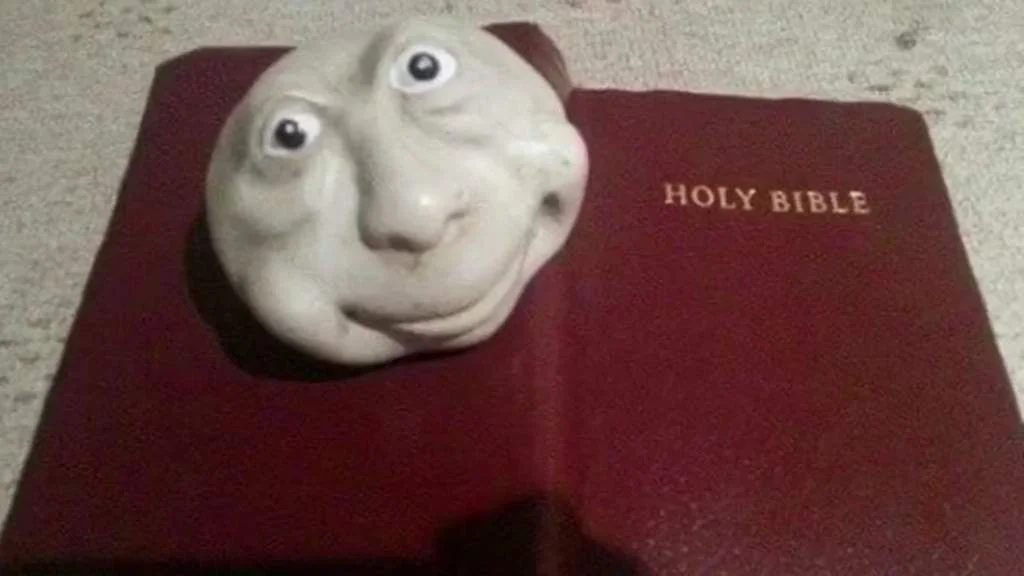In the realm of internet culture, where memes and trends emerge and evolve at a bewildering pace, few phenomena have captured the imagination of netizens quite like “Cursed Among Us images.” This curious digital trend fuses the popular online game “Among Us” with an eerie, unsettling aesthetic that defies conventional explanation. These images straddle the line between humor, horror, and absurdity, generating a unique blend of emotions that both captivate and mystify audiences. In this article, we delve into the world of cursed Among Us images, exploring their origins, characteristics, and psychological underpinnings that make them a fascinating yet enigmatic aspect of contemporary internet culture.

The Genesis of Cursed Among Us Images:
The roots of Cursed Among Us images can be traced back to the game’s immense popularity in 2020. “Among Us,” developed by InnerSloth, quickly became a global sensation due to its innovative gameplay and the intrigue of identifying impostors in a spaceship setting. As players engaged with the game, they began to share their experiences, strategies, and eventually, memes related to “Among Us.” Amid this fervor, a new type of meme emerged – one that subverted the game’s light-hearted nature with a disturbing twist.
Characteristics of the Cursed Among Us Images:
Cursed Among Us images are characterized by their ability to evoke a visceral reaction that is often a mix of discomfort, amusement, and a dash of horror. These images typically feature distorted or altered visuals taken from the game, combined with unsettling elements from other sources, such as glitch aesthetics, surreal imagery, or eerie filters. The juxtaposition of the familiar Among Us characters and settings with these jarring elements creates an uncanny effect that defies expectations.
The images might depict distorted crewmates with unsettling facial expressions, glitched environments, or unexpected crossovers with other media. Some cursed images play with the game’s mechanics, such as the distorted proportions of characters, exaggerated facial features, or disorienting perspectives. These alterations blur the boundary between reality and unreality, tapping into the psychological discomfort associated with the uncanny valley – a phenomenon where humanoid objects closely resembling humans elicit feelings of eeriness and unease.
The Psychological Fascination:
The allure of Cursed Among Us images lies in their ability to tap into various psychological mechanisms. The uncanny, as mentioned earlier, plays a significant role. The unease generated by these images can be attributed to the brain’s struggle to process something that is both familiar and unfamiliar simultaneously. The combination of the game’s recognizable elements with strange alterations triggers cognitive dissonance, intensifying the emotional response.
Furthermore, cursed images play with the emotions of surprise and shock. The sudden encounter with disturbing visuals triggers the body’s fight-or-flight response, albeit in a digital and benign context. This rapid succession of emotions – from curiosity to discomfort to amusement – creates a rollercoaster of feelings that keeps the viewer engaged. It’s a curious blend of attraction and repulsion that keeps users coming back for more, attempting to decipher their own emotional responses.
The Role of Absurdity:
Absurdity is another pivotal component of cursed Among Us images. The fusion of familiar game elements with surreal, nonsensical, or absurd visuals challenges the viewer’s sense of reality. The inherent absurdity breaks the mental frameworks we use to understand the world, prompting a reevaluation of our preconceptions. This subversion of expectations contributes to the humor inherent in these images – a humor that arises from the absurd and the unexpected.
The Sociocultural Context:
The rise of Cursed Among Us images can be seen as a reflection of the broader cultural landscape. In an era dominated by constant digital stimuli, the internet’s denizens are constantly seeking novel experiences. The juxtaposition of familiarity and discomfort in cursed images offers a brief escape from the monotony of everyday content consumption. This is particularly relevant in an age when humor often embraces the bizarre and unconventional.
Additionally, the internet’s collective nature plays a role in propagating the trend. The rapid sharing and resharing of these images across various platforms contribute to their virality. The desire to be part of a cultural phenomenon drives individuals to participate in the spread of cursed Among Us images, turning them into a shared experience that transcends geographical boundaries.
The Creative Outlet:
Creators of Cursed Among Us images often find the trend to be a unique form of artistic expression. It allows them to experiment with visual aesthetics, challenge traditional norms of beauty, and explore the boundaries of digital media. The unrestricted nature of the trend grants creators the freedom to push artistic limits, creating a diverse range of images that provoke thought, emotion, and sometimes even discomfort.
Conclusion: The Uncharted Terrain of the Digital Uncanny:
Cursed Among Us images are a testament to the ever-evolving landscape of internet culture. They harness a combination of psychological triggers, absurdity, and cultural context to create an experience that is as captivating as it is puzzling. As users continue to engage with and create these images, the trend is likely to evolve, adapting to the shifting cultural currents of the digital age.
In this realm of digital uncanny, where the familiar becomes unfamiliar and the absurd is embraced, cursed Among Us images stand as a fascinating digital phenomenon. Their allure lies in their ability to invoke a myriad of emotions and thoughts, sparking curiosity and discussion among netizens. As internet culture continues to evolve, it’s possible that we’ll see new iterations of this trend or the emergence of entirely new ones, each pushing the boundaries of the expected and familiar.
